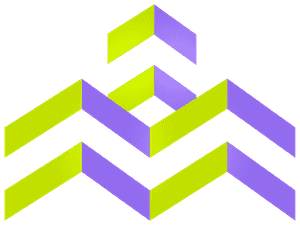New EU Product Liability Directive: Reshaping the Digital Landscape
by Streamlex 18 November 2024
The European Union has taken a significant step forward in modernizing its product liability framework. On 18 November 2024, the new Product Liability Directive (PLD) was officially published, marking a shift in how the EU addresses liability for defective products in the digital age. This update to the nearly 40-year-old regime brings major changes that will impact businesses across various sectors, particularly those involved in software and AI development.
Key Highlights of the PLD
Expanded Scope and Definitions
The PLD introduces a broader definition of "product," now explicitly including software, digital manufacturing files, and AI systems. This expansion reflects the EU's recognition of the evolving nature of products in our increasingly digital world. The directive applies to all software, whether embedded in hardware or distributed independently, with the notable exception of free and open-source software developed outside commercial activities.
‘product’ means all movables, even if integrated into, or inter-connected with, another movable or an immovable; it includes electricity, digital manufacturing files, raw materials and software (Article 4(1) of the PLD)
Strict Liability Framework
Under the new directive, manufacturers face strict liability for defective products, regardless of fault. This framework allows individuals to claim compensation for damages caused by defective products, including:
- Death or personal injury, including medically recognised psychological damage
- Property damage
- Destruction or corruption of certain data types
Easier Litigation Process
The PLD introduces measures to lower barriers for pursuing compensation claims:
- New disclosure obligations require defendants to provide "necessary and proportionate" evidence upon request.
- Rebuttable presumptions of defectiveness and causation have been introduced to support claimants when evidence is inaccessible or technical complexity poses challenges
Member States shall ensure that, at the request of a person who is claiming compensation in proceedings before a national court for damage caused by a defective product (the ‘claimant’) and who has presented facts and evidence sufficient to support the plausibility of the claim for compensation, the defendant is required to disclose relevant evidence that is at the defendant’s disposal, subject to the conditions set out in this Article (Article 9(1) of the PLD)
Relevance of PLD to AI and Software
Broad Definition of 'Product'
The Directive explicitly includes software within its scope, covering operating systems, applications, and AI systems. This comprehensive approach ensures that digital solutions are treated with the same scrutiny as physical products. It applies regardless of whether the software is delivered as a standalone product, integrated into hardware, or accessed via cloud services.
Products in the digital age can be tangible or intangible. Software, such as operating systems, firmware, computer programs, applications or AI systems, is increasingly common on the market and plays an increasingly important role for product safety. Software is capable of being placed on the market as a standalone product or can subsequently be integrated into other products as a component, and it is capable of causing damage through its execution. In the interest of legal certainty, it should be clarified in this Directive that software is a product for the purposes of applying no-fault liability, irrespective of the mode of its supply or usage, and therefore irrespective of whether the software is stored on a device, accessed through a communication network or cloud technologies, or supplied through a software-as-a-service model (Recital 13 of the PLD)
AI Providers Under Scope
The directive classifies AI system providers as manufacturers, making them liable for defects in updates, upgrades, and machine learning algorithms. This classification extends to developers of software, including providers of AI systems as defined by the AI Act.
Cybersecurity Compliance
Products violating safety-relevant cybersecurity requirements may be considered defective under the new PLD. This provision should be interpreted alongside new cybersecurity-related requirements under the AI Act, NIS2 and Cyber Resilience Act (CRA).
Transposition Timeline and Business Impact
Member States must transpose the PLD into national law by 9 December 2026. This two-year implementation period provides businesses with a crucial window to prepare for the new liability landscape.
Conclusion
The new Product Liability Directive represents a significant evolution in EU product liability law, particularly in its approach to digital products and AI. By expanding the scope of liability and easing the path for consumer claims, the PLD aims to create a more balanced and modern framework for addressing product-related harm in the digital age.
For legal and compliance professionals, staying informed about these changes and their implications is crucial. The PLD, along with other recent EU initiatives like the AI Act, signals a new era of regulatory scrutiny for digital products and services. Businesses operating in the EU market must proactively adapt their practices to ensure compliance and mitigate potential liability risks in this evolving legal landscape.
Streamlex.eu will provide a one-stop-shop repository for all implementing and delegated acts, as well as guidance adopted under the PLD. Full text of the PLD, with articles conveniently linked to recitals and definitions highlighted throughout the text, is already available on Streamlex.


